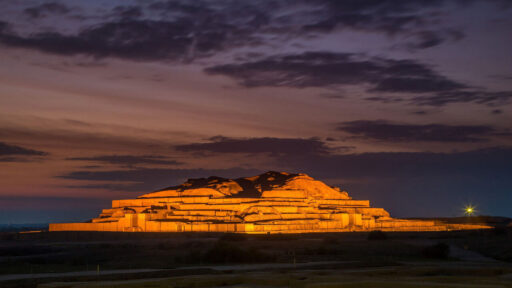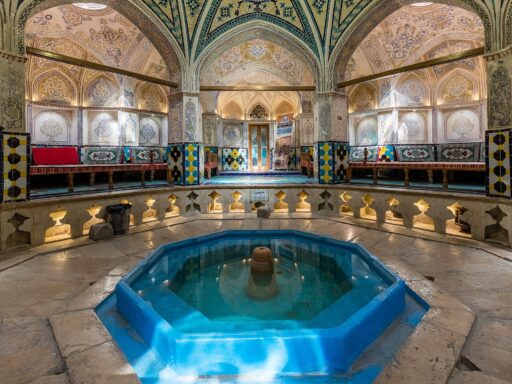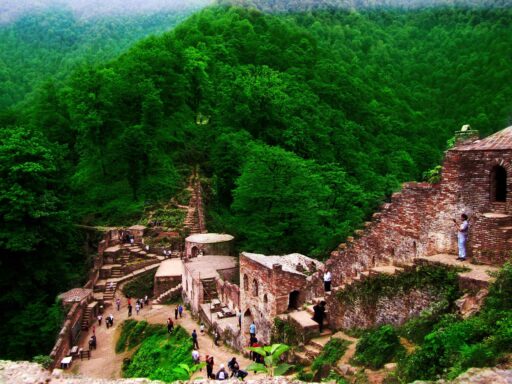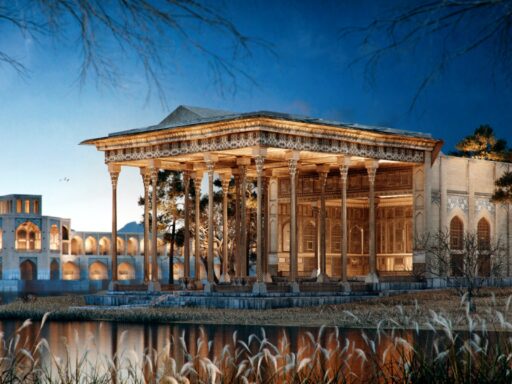Rising from the plains of Iran’s Khuzestan province stand the monumental ruins of an ancient ziggurat. This massive stepped pyramidal temple provides a remarkable window into the sophisticated cultures that inhabited the region millennia ago. Though ravaged by time, the ziggurat continues to dominate the landscape and captivate visitors with its sheer scale and presence.

What Is A Ziggurat?
A ziggurat is a terraced step pyramid structure built in ancient Mesopotamia and western Iran. It served as a temple to local gods and a bridge between heaven and earth. The successive platforms of a ziggurat were believed to get the priests progressively closer to their deities.
The earliest ziggurats were built by the Sumerians in the 21st century BC in cities like Ur and Uruk. Later civilizations like the Babylonians, Assyrians and Elamites also constructed their own impressive ziggurats. Nineteen ziggurats are known from Iran, but many remain unexcavated.
The Khuzestan ziggurat dates to around 1100 BC. It is believed to have been built by the Elamites, one of the earliest civilizations to inhabit parts of Iran. Let’s explore the history and architecture of this magnificent structure.
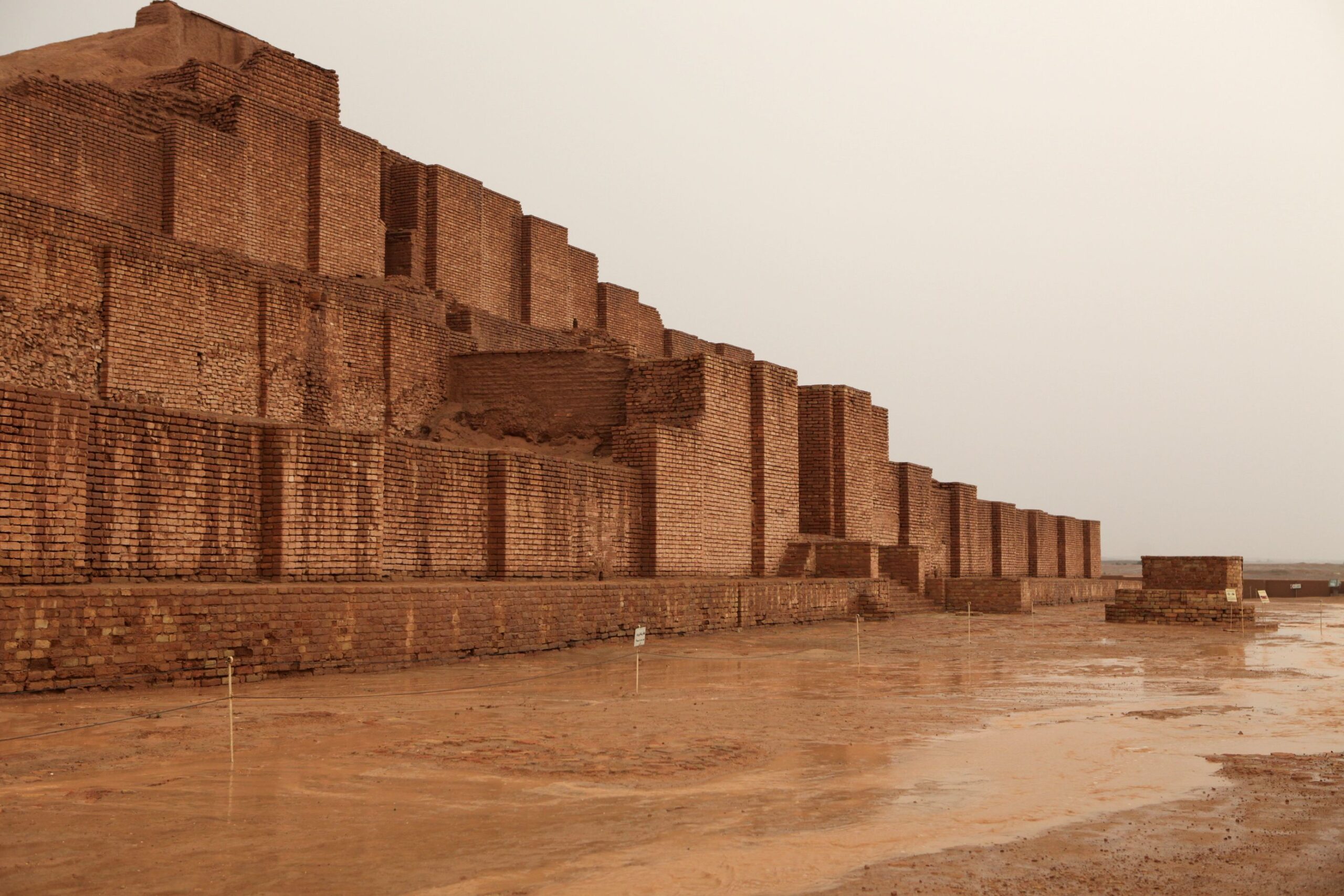
The Rise and Fall of Elam
Elam was located in what is now southwest Iran, neighboring the great civilizations of Sumer and Akkad in Mesopotamia. Elamite culture emerged in the late 4th millennium BC centered around their capital of Susa.
Over 15 centuries, Elam was at times independent and others dominated by outside powers. Despite this, Elamites maintained a vibrant culture that included their own language and writing system. Elam profoundly influenced neighboring civilizations.
Elamite religion revolved around a pantheon of gods such as Humban and Inshushinak. Like other ancient peoples, the Elamites built ziggurats to venerate their gods. The greatest Elamite ziggurat is Chogha Zanbil in Khuzestan.
After over 2000 years of history, Elam was defeated by Ashurbanipal of Assyria around 640 BC. But Elamite culture had an enduring impact far beyond its fall.
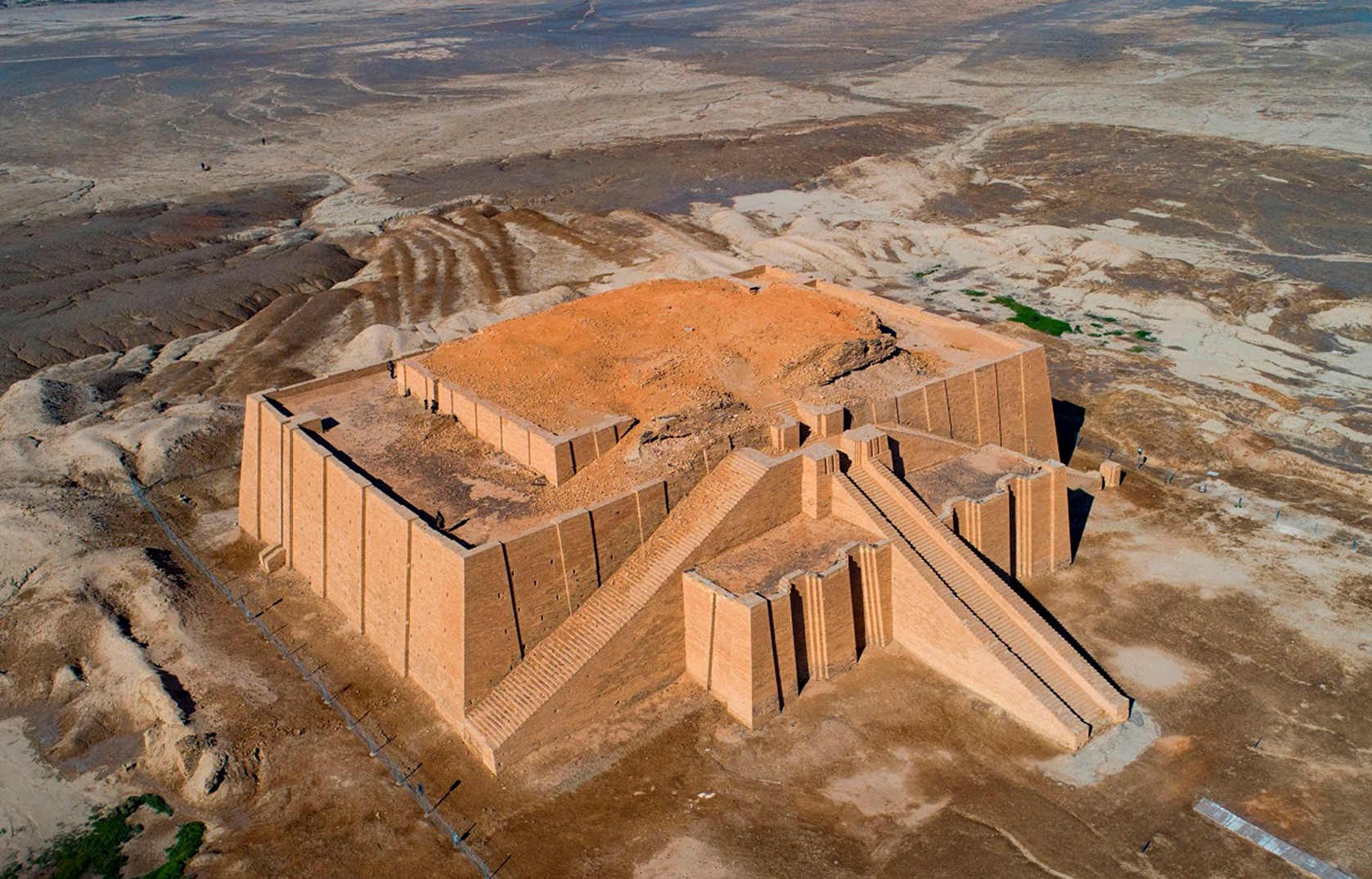
The Spectacular Khuzestan Ziggurat
The Khuzestan ziggurat stands around 20 meters tall over an expansive temple complex. It was almost certainly dedicated to the Elamite deity Napirisha. Though timeworn, it is remarkably intact compared to other ancient ziggurats outside Iraq.
The ziggurat appears to have had at least four levels during its heyday. The bulk of the structure was built with courses of sun-dried mud bricks. Like other ziggurats, the facade would have been decorated with glazed baked bricks, timber, gold and other ornamentation.
Archaeologists have uncovered the remains of a temple, altar and other structures surrounding the ziggurat. Finds include terracotta figurines of Elamite worshippers and aspects of the gods. Cuneiform tablets and pottery shed light on Elamite language, culture and beliefs.
The technical skill to construct such a giant structure was extraordinary over 4000 years ago. The ziggurat shape also had symbolic religious significance. These factors make ancient ziggurats including Khuzestan truly monumental engineering feats.

Ceremony and Ritual at the Ziggurat
The Khuzestan ziggurat was the religious focal point of the city and housed the temple of a chief deity such as Napirisha. The pyramidal shape and successive terraces symbolized a progression toward heaven.
Only priests were permitted on the upper tiers for ceremonies like sacrifices and offerings to the gods. Lower levels were accessible to worshippers to present their prayers and devotions.
Major festivals would have seen processions of priests, worshippers and animals up the ziggurat. The rites conducted on the summit were believed to gain the god’s blessing over the community below.
In their theology, the ziggurat formed a direct channel between earthly and heavenly realms. Inscriptions indicate offerings of fish, birds, eggs and vegetables to Napirisha. The gods were believed to inhabit the ziggurats.
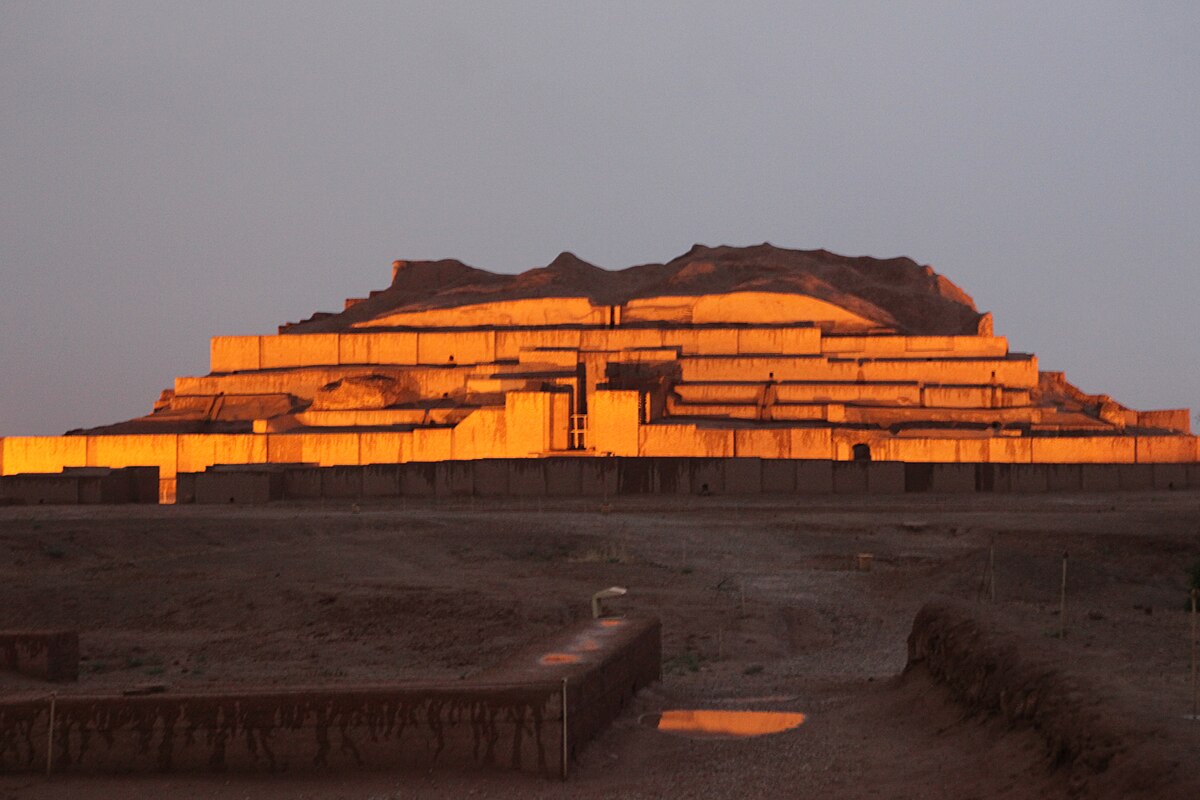
Parallels with Mesopotamian Ziggurats
The Elamites were in intense contact with the contemporary Mesopotamian civilizations which also built monumental ziggurats. The similarities are no coincidence.
The Mesopotamian ziggurats of Ur, Babylon and others would have inspired Elamite architecture. But the use of baked bricks gave Elamite ziggurats their own style and enhanced durability.
Religiously, Elamite deities bear similarities with Mesopotamian gods like Marduk. But the Elamite pantheon had greater prominence of goddesses compared to male-dominated Mesopotamia.
Some linguistic influence from Sumerian and Akkadian is visible in Elamite texts, but the Elamite language stands distinct. This shows the complex cultural interchange at play in the Ancient Near East.
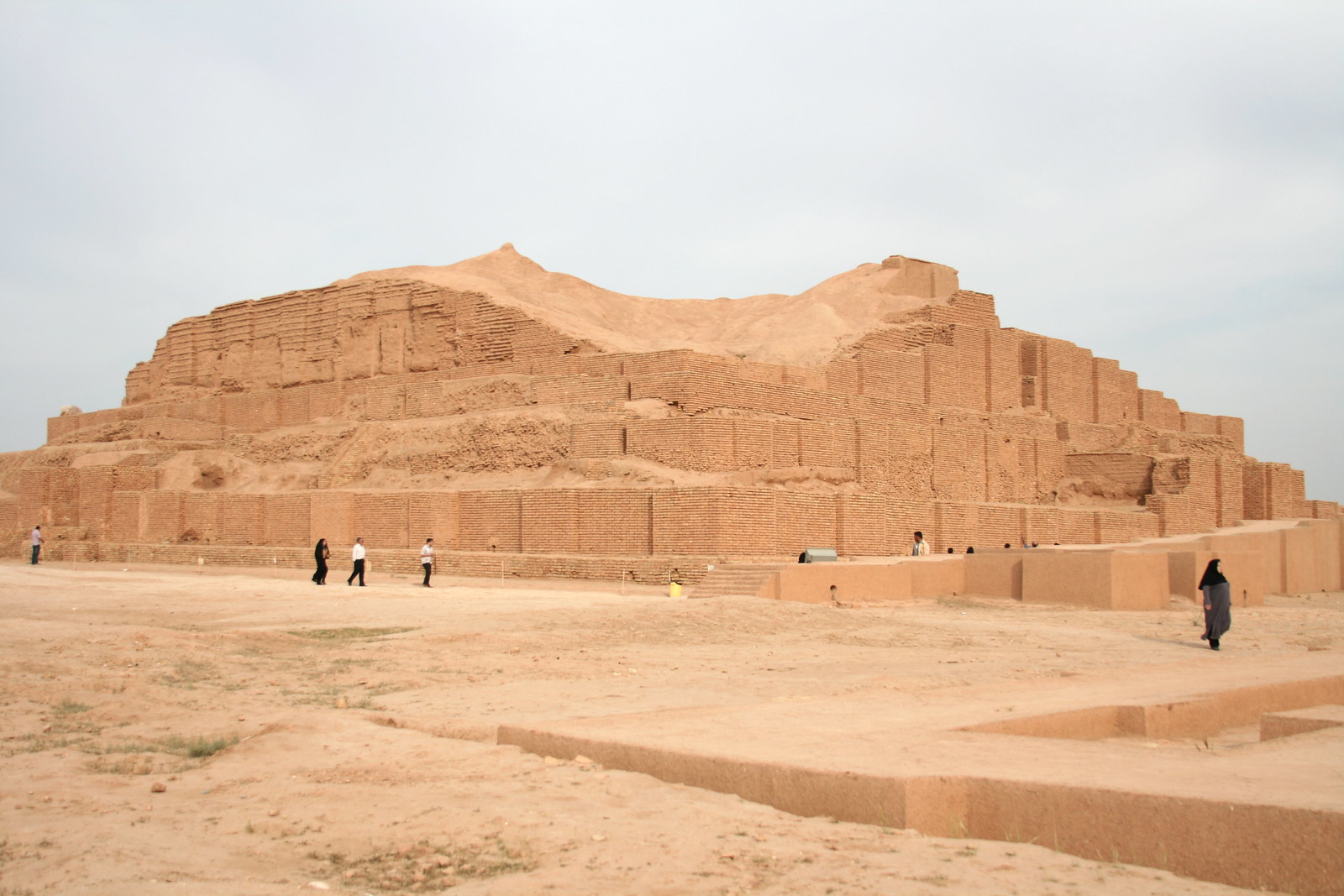
Restoration and Conservation of the Ziggurat
Given its impressive preservation, active conservation is required to prevent further erosion of the Khuzestan ziggurat. Unfortunately, resources are limited in the region and preservation efforts can be inconsistent.
Sections have been restored with new mud brick and the original stepped shape made more defined. But without maintenance, wind, rain and human activity will gradually degrade the ancient structure.
Grass now covers the ziggurat, which protects it but also damages the brickwork. Regular re-mudding of the facade could better protect the core of the ziggurat. More oversight is needed to manage tourists at the site as well.
Creating a protected area around the ziggurat and a dedicated site museum would aid restoration work and visitor experience. This would unlock the structure’s tourism potential while saving it for future generations.
Conclusion
The ancient ziggurat of Khuzestan is a remarkable vestige of Elamite architecture and religion. For the Elamites, the pyramidal shape enabled communion between gods and men. Ceremonies once thronged the terraces, but are now only echoed in the artefacts found scattered around its base.
Though weathered by 4000 years, the ziggurat continues to evoke the mystique of the Ancient Near East. With active conservation, it can educate and inspire visitors about Iran’s heritage for centuries more. The majestic ruins in Khuzestan remain a testament to both the ingenuity and faith of civilizations past.


